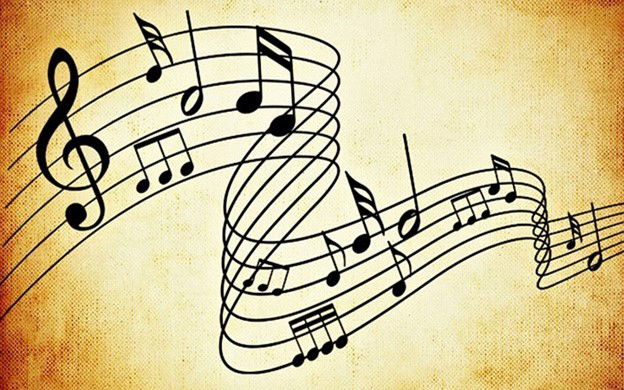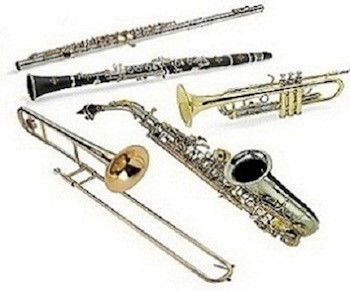How a Composer Chooses the Right Instruments for a Concert Band Composition

Composing a new piece for a concert band is an exciting venture that allows composers to showcase their musical creativity. One of the critical decisions they face in the early stages is selecting the instruments that will bring their composition to life. This process requires careful consideration, as each instrument contributes a unique timbre and character to the overall sound. In this article, we will explore the key factors that help composers make informed decisions when choosing instruments for a concert band composition.
Unless the new composition is for a movie score or other professional setting, a Concert Band has a basically fixed instrumentation, at lest for the length of a school year or playing season. When writing a new composition, the composer is challenged with deciding which instruments to use for each section of a piece. It would be unwise to write a piece in which one or more instruments were not played at all. Nor, would any wise school band director ever buy such a piece.
Most composers write “on spec”, that is, they write a piece that can be played by the widest range of skill levels. This article will focus more on what a composer has to keep in mind while writing for a more narrow range of bands, or even a commissioned piece.
Understanding the Ensemble – Before delving into the specifics of instrument selection, it's essential to have a solid understanding of the concert band as an ensemble. Typically made up of woodwind, brass, and percussion instruments, the concert band offers a diverse assortment of sounds. A composers need to be familiar with the range and capabilities of each instrument family, as this knowledge will guide their choices during the composition process.
It also helps to know if a certain section e.g., clarinets or trombones, was more advanced than the rest of the band. In school bands of all sorts, one section may be comprised of upper classmen with more experience. Of course, if the director wishes to use the same music in later years, it may not be wise to rely on such a more talented section.
There are a number of lists of so-called standard instruments that should be included in a composition for concert band. These vary by composer, region of the country/world, and resources of the band for which the piece is being written. Whether it’s a public high school or a community band, the instrumentation is never the same year to year, or even semester to semester. At the end of the article is a list that includes the instruments in a complete Concert Band. There are some that will not be on the list because they are so extremely rare. Those that more probably would be absent from an average band will be in italics.
Consider the Musical Style – The genre and style of a composition play a significant role in determining the instruments to be included. Different genres evoke distinct emotions and atmospheres, and the composer’s instrument choices should align with the mood to be expressed. For example, a piece with a pastoral theme might feature woodwinds prominently, while a bold and powerful composition may emphasize brass and percussion.
Balance and Timbre – Achieving a balanced and cohesive sound is crucial in concert band compositions. Pay attention to the timbral qualities of each instrument and consider how they interact with one another. Experiment with combinations to find a harmonic balance that suits the desired musical vision. Avoid overloading one section while neglecting another, as this can lead to an uneven and less effective performance.

Utilize the Full Range - Take advantage of the full range of the concert band by exploring the high and low registers of each instrument. This not only adds depth to the composition but also allows the composer to create dynamic contrasts. Experiment with different instrument combinations to discover unique textures and colorations that enhance the overall sonic experience.
Most instruments tend to have a different tone in different registers. Among the most notable are French horns and oboes. In the lower register, a French horn sounds quite mellow, more like a trombone. In the upper register, it sounds much more brash, like a trumpet. If the composer wants a four-part harmony among the lower brass, using a French horn in the lower register will work well. Oboes tend to sound more like a clarinet in the lower register, but approach the tone of a flute higher up. The big difference between a flute and an oboe when playing the upper notes is that the oboe still has a lot of overtones, whereas the flute is still lacking those tones. In that case, it would be better to have the oboe play the melody and the flute a harmony part, if there were only one flute part. If two flute parts, one would double the oboe part.
Scoring for Skill Levels – Concert bands often consist of musicians with varying skill levels. When selecting instruments, keep in mind the technical abilities of the performers. Ensure that the parts are challenging enough to engage experienced musicians but not so complex that less experienced players struggle. Striking the right balance will result in a more enjoyable and successful performance. Once again, here’s a good place to use the Pygmalion Effect.
Salt Cellar Creations understands the differences in different bands, and is quite competent in writing for different skill levels. Let us write or arrange for your band, whether it’s for the current band for something special, or something that will prove to be a timeless classic. Contact Us for more info.

Consider the Venue – This may not apply to a band that plays in different places. However, if it’s a high school band and plays each concert in the same auditorium, this may be a very good thing to consider.
The performance venue can influence the choice of instruments. If the space is acoustically vibrant, a larger use of brass in certain places will capitalize on the resonance. In contrast, a smaller venue might call for a more intimate arrangement, with a focus on woodwinds and softer dynamics. Tailor the instrumentation to suit the acoustics of the performance space.
Collaborate with Directors Musicians – Communicate well with the directors and /or musicians who will purchase and perform the composition. Their insights and expertise can provide valuable perspectives on instrument choices and overall playability. Collaborating with the ensemble fosters a sense of unity and ensures that the composition is both artistically satisfying and technically feasible.
Conclusion – Choosing the right instruments for a concert band composition can be a tricky process that requires a thoughtful approach. By considering the musical style, achieving balance and timbre, scoring for different skill levels, exploring the full range of instruments, and taking into account the performance venue, you can create a piece that captivates audiences and showcases the unique capabilities of the concert band.
Salt Cellar Creations understands the challenge that composing for a Concert Band presents. We have a growing library of original works and arrangements. Explore the offerings HERE.
SCC can also compose an original piece for you or do a custom arrangement for you. There are two ways that this can be done; one is much more affordable than the other. And SCC is always looking for ideas of pieces to arrange or suggestions for original pieces.
LIST OF CONCERT BAND INSTRUMENTS
We have sold music not only in the US but in Canada, the United Kingdom, France, Australia, and New Zealand. Please visit the WEBSITE or CONTACT US to let us know what we can do for you!
Woodwinds
* Flute 1, 2
* Piccolo (Its rarity is up for debate)
* Bass clarinet
* Clarinet in Bb 1, 2, 3
* Oboe 1, 2
* Bassoon
* Alto saxophone 1,2
* Baritone saxophone
* Tenor saxophone
* Clarinet in Eb
* Alto clarinet
* Contra bassoon
* Soprano saxophone
* English horn
Brass Instruments
* Trumpet/cornet in Bb (Cornets are often much rarer than trumpets)
* Flugel horn
* Tenor trombone
* Bass trombone
* Alto tenor horn in Eb
* French Horn
* Euphonium/Baritone horn
* Tuba / Sousaphone (although Sousaphone is usually reserved for marching)
Percussion
* Snare drum
* Bass drum
* Tenor drum
* Cymbals
* Bongos, Congas, Tom-toms, Timbales
* Drum set (when the number of percussionists is low or a different sound is needed)
* Tambourine
* Triangle
* Timpani (A full set is usually four. Often a band is limited to two or three.)
* Xylophone, Vibraphone, Glockenspiel, Marimba, and other instruments with the layout of a keyboard. Often only one or two is in a band.
* Tam-tam, Crotales, Chimes, Wind chimes
* Other assorted instruments, usually acquired for special arrangements - Wood blocks, Maracas, Claves, Anvil, Rain stick, Whip, Guiro, Finger cymbals, Slide whistle, Sleigh bells